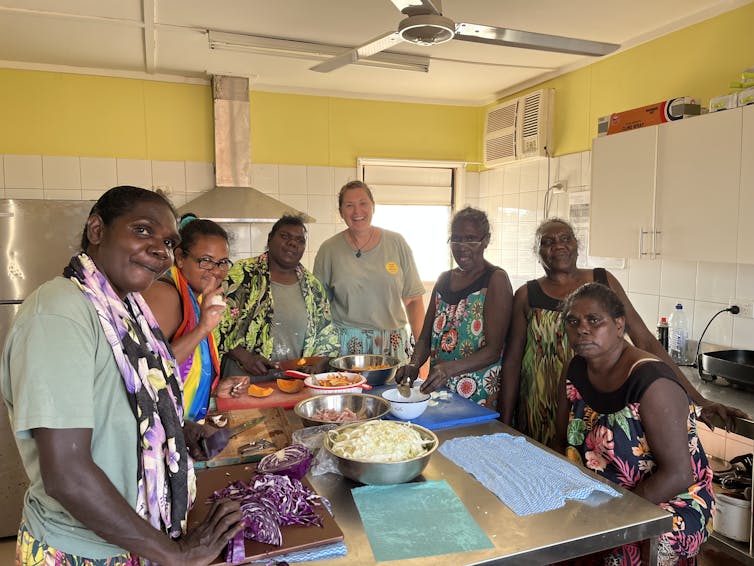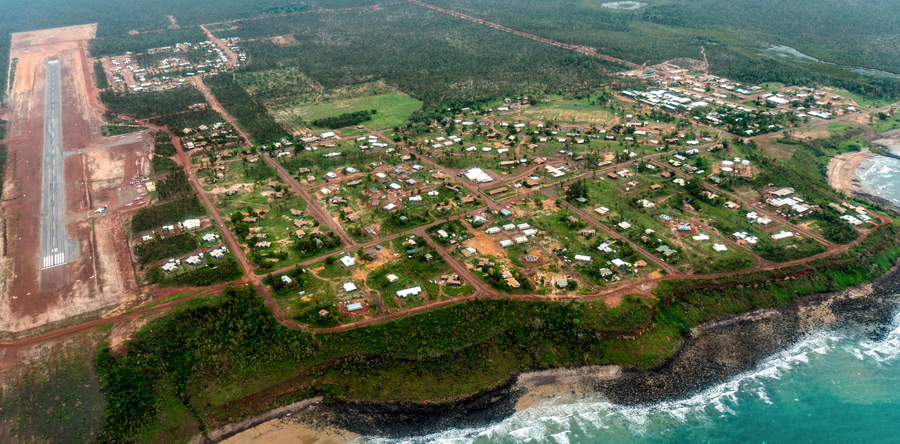Education provided to remote Aboriginal people such as the Yolŋu needs to be presented in a way that brings revelation and understanding.
Indigenous Australians are more than twice as likely as non-Indigenous Australians to suffer from disease, particularly chronic diseases such as diabetes, heart disease and kidney disease.
The health disparities are worse in remote and very remote areas. The burden of diabetes in the remote Aboriginal population of the Northern Territory, where it affects more than one in four adults aged over 20, is among the highest in the world.
The Yolŋu (or Yolngu) people of Northeast Arnhem land, a large, remote area in the NT, maintain one of the oldest continuously living cultures in the world. They also represent one of the largest Indigenous groups in Australia.
Yet, people in these communities face the highest number of avoidable deaths in Australia, mostly from chronic disease. A diet of too much sugar, refined and processed food products, smoking and an unhealthy lifestyle contribute to this region’s health crisis.
Beginning in 2014, senior Yolŋu women in Galiwin’ku, one of the largest communities in Northeast Arnhem land, have been developing a unique diet and lifestyle change program called Hope for Health. The program has been running intermittently since then, and includes on-Country health retreats, individualised health coaching, and group classes and activities.
We recently evaluated this program. We found it offers significant benefits which could reduce chronic disease risk among the Yolŋu people.

A holistic approach
Most Yolŋu live on Aboriginal land in remote communities of various sizes and hold a deep unbroken connection to their ancestral country.
Health and wellbeing is considered a holistic concept that connects physical, social, emotional, cultural, spiritual and ecological wellbeing at both an individual and community level.
The Hope for Health program is based on the values of Margikunhamirr (making known and sharing understanding) and Goŋ-ŋthanhamirr (supporting and walking alongside each other) to empower Yolŋu to gain control of their health.
Over four months, the program focuses on giving people the knowledge to make their own lifestyle changes and choices to improve health and prevent chronic disease.
It includes:
- An on-Country health retreat: this is an immersive 12-day bush retreat focused on reconnecting with the Yolŋu tradition of living, eating, and healing from the land, and learning about the body and health.
- In-community support and mentoring: over 14 weeks following the retreat, this part of the program is focused on overcoming barriers to introducing lifestyle changes. It includes group activities for identifying healthy food options at the shops, storing and cooking fresh produce, and yarning about healthy lifestyles.
- Individual and home-based health coaching: this takes place during the retreat and afterwards in participants’ homes or places of their choosing. Health coaches explain blood test results to participants, offer education in their language and help with goal setting, such as reducing sugar consumption, smoking, or increasing exercise.
https://www.youtube.com/embed/O8SsSXcmR-o?wmode=transparent&start=0 The Hope for Health program seeks to give people the knowledge they need to make their own lifestyle changes.
What we found
Together with colleagues at the Doherty Institute and other collaborators, we evaluated a Hope for Health program in the second half of 2022.
We assessed outcomes such as body weight and blood sugar levels among 55 adults before and after they took part in the program. All participants were overweight or obese at the beginning.
We recently published our findings in the Medical Journal of Australia.
By the end of the program, 52% of participants reduced their HbA1c – a measure of blood sugar – by at least 0.3%. Some 33% of participants lost at least 3% of their body weight.
Changes such as these are called “clinically significant” because they’re big enough for doctors to see real health benefits such as reduced risk of chronic disease, including diabetes and heart disease.
Other outcomes we looked at improved too. Overall, participants had smaller waist circumferences at the end, lower body-mass index, better “good” cholesterol levels, were drinking less sugary drinks, and doing more daily exercise.
Why did it work?
Behavioural change is not necessarily easy to achieve in these communities, which have a very different language and culture from mainstream Australia.
Our study is the first in remote Aboriginal communities to comprehensively evaluate a lifestyle change program with such promising results.
The study design cannot prove the intervention directly caused the changes. That is, there may have been other factors which contributed to the outcomes.
A randomised controlled trial would have provided stronger proof the program led to the health improvements we observed, but these trials can be unsuitable in remote Indigenous communities. In this study, the community was concerned delaying the program for some people would harm their health. Also, many wanted their extended family to take part, making it difficult to select a representative control group which would be needed for this type of study.
Nonetheless, our results suggest support for culturally sensitive health initiatives such as Hope for Health is crucial for reducing the burden of chronic disease in remote Indigenous communities.
We believe Hope for Health worked because it was led by Yolŋu people and is built on Yolŋu knowledge, language and culture. Education provided to remote Aboriginal people such as the Yolŋu needs to be liya-lapmarnhamirr – that is, presented in a way that brings revelation and understanding.
Hasthi Dissanayake, Research Fellow in Indigenous Health, The University of Melbourne; Beverley-Ann Biggs, Head, Global and Indigenous Health Group, Doherty Institute, The University of Melbourne, and George Gurruwiwi, Community Elder, Indigenous Knowledge
This article is republished from The Conversation under a Creative Commons license. Read the original article.
.

